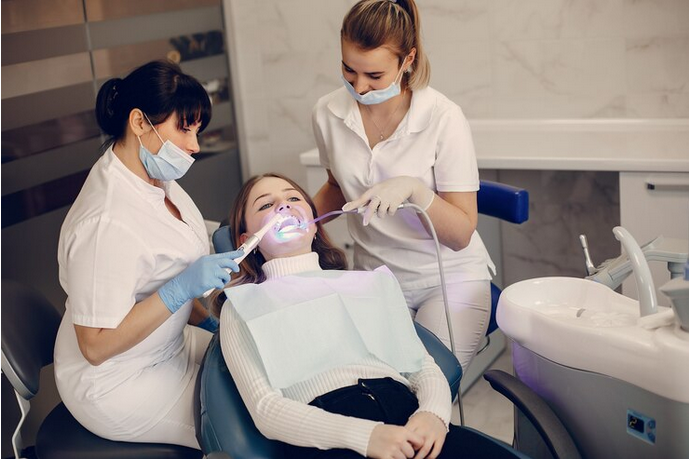Introduction: The Technological Revolution in Dental Care
The field of dentistry is undergoing a transformative technological revolution, leading to improved patient experiences, more precise diagnostics, and enhanced treatment options. This comprehensive guide delves into the future of dental care, exploring the technological advances that are shaping the industry and the implications for both patients and practitioners.
Dental Imaging and Diagnosis
Technological advancements have revolutionized the way dental professionals diagnose oral health issues and plan treatments. Modern imaging technologies provide high-resolution images and enhanced diagnostic capabilities.
- 3D Cone Beam Computed Tomography (CBCT): CBCT imaging offers detailed 3D images of the oral and maxillofacial structures. This technology is particularly useful for complex procedures like implant placement, oral surgeries, and orthodontic planning.
- Intraoral Scanners: Intraoral scanners have replaced traditional impressions with digital scans. These devices create 3D models of the teeth, improving the accuracy of restorations, such as crowns and bridges.
- Artificial Intelligence (AI) and Machine Learning: AI-powered diagnostic tools can analyze radiographs and images to detect dental diseases, including cavities and periodontal conditions, at an earlier stage.
Minimally Invasive Dentistry
Technological advancements have also led to the development of minimally invasive techniques, which reduce patient discomfort and preserve healthy tooth structure.
- Laser Dentistry: Lasers are used for a variety of dental procedures, including cavity detection, gum disease treatment, and teeth whitening. They minimize discomfort and reduce the need for anesthesia.
- Air Abrasion: Air abrasion uses a fine stream of particles to remove decay without the need for drilling, preserving more of the healthy tooth structure.
- Ultrasonic Scalers: Ultrasonic scalers use high-frequency vibrations to remove tartar and plaque during dental cleanings, providing a more comfortable experience for patients.
Teledentistry and Remote Monitoring
The advent of telehealth and remote monitoring technologies has opened up new possibilities for dental care, particularly in the context of patient accessibility and convenience.
- Teledentistry: Teledentistry allows patients to consult with dental professionals remotely. It's particularly beneficial for initial assessments, follow-up appointments, and post-operative care.
- Remote Monitoring: Wearable devices and apps can help patients track their oral health and treatment progress, offering real-time data to both patients and dentists.
Dental Restorations and Prosthetics
The world of dental restorations and prosthetics has been transformed by technological innovations, offering more natural and durable solutions.
- Digital Impressions: Digital impressions with intraoral scanners have replaced traditional molds for crowns, bridges, and dentures, resulting in a more comfortable and accurate fit.
- CAD/CAM Technology: Computer-aided design and computer-aided manufacturing (CAD/CAM) systems allow for the creation of precise and aesthetically pleasing restorations, often in a single appointment.
- 3D Printing: 3D printing technology has made it possible to create custom dental prosthetics, including dentures, bridges, and even orthodontic devices, with greater efficiency and precision.
Pain Management and Anxiety Reduction
Technology has played a pivotal role in enhancing the patient experience by making dental visits more comfortable and less anxiety-inducing.
- Local Anesthetic Innovations: Advancements in local anesthesia delivery systems, like the Wand, provide more comfortable and painless injections.
- Virtual Reality (VR) and Distraction Techniques: VR headsets and other distraction techniques are used to reduce anxiety and discomfort during dental procedures, creating a more relaxed environment.
- The DentalVibe: The DentalVibe is a device that uses vibration to mask the sensation of pain during injections, making the process more comfortable for patients.
Oral Health Monitoring and Smart Devices
The emergence of smart devices and apps has empowered individuals to take a more proactive role in monitoring and managing their oral health.
- Smart Toothbrushes: Smart toothbrushes use sensors and apps to track brushing habits, offer real-time feedback, and encourage better oral hygiene practices.
- Oral Health Apps: Numerous apps provide reminders for dental appointments, monitor oral health progress, and educate users about proper dental care.
- IoT Dental Devices: The Internet of Things (IoT) has given rise to dental devices like smart flossers and toothbrushes that collect data and provide insights into oral hygiene.
Robotics in Dentistry
Robotic technologies are being introduced into dental procedures, particularly in surgery and implantology.
- Robotic-Assisted Surgery: Robots can aid in precise, minimally invasive surgeries, such as implant placements, ensuring optimal positioning and accuracy.
- Autonomous Instruments: Autonomous instruments, like robotic hands, can assist dental professionals in various tasks, contributing to increased efficiency and precision.
The Future of Artificial Intelligence (AI)
Artificial intelligence is set to play an increasingly prominent role in dental practice, particularly in diagnostics and treatment planning.
- AI-Powered Diagnosis: AI algorithms can analyze radiographs and images to detect dental conditions, providing a faster and more accurate assessment.
- Treatment Planning Assistance: AI can assist dentists in formulating treatment plans by analyzing patient data, suggesting options, and predicting outcomes.
Challenges and Ethical Considerations
As dental technology advances, it also presents challenges and ethical considerations:
- Cost and Accessibility: Some cutting-edge technologies can be expensive, potentially limiting accessibility for certain patients.
- Data Security and Privacy: The collection and sharing of patient data in teledentistry and remote monitoring raise concerns about data security and patient privacy.
- Regulatory Frameworks: The rapid evolution of dental technology requires regulatory bodies to adapt to ensure patient safety and the ethical use of these technologies.
Conclusion: A Bright Future for Dental Care
The future of "saturday dental care" is bright, thanks to the ongoing technological advancements that benefit both patients and practitioners. From improved diagnostics and minimally invasive techniques to teledentistry and AI-powered solutions, the dental field is evolving rapidly.
However, it's essential to address the challenges and ethical considerations that come with these technological leaps, ensuring that dental care remains accessible, safe, and patient-centered.
Dental professionals should embrace these innovations to provide higher quality care and improve the patient experience, while patients can look forward to more comfortable, efficient, and personalized dental treatment in the years to come.





Comments